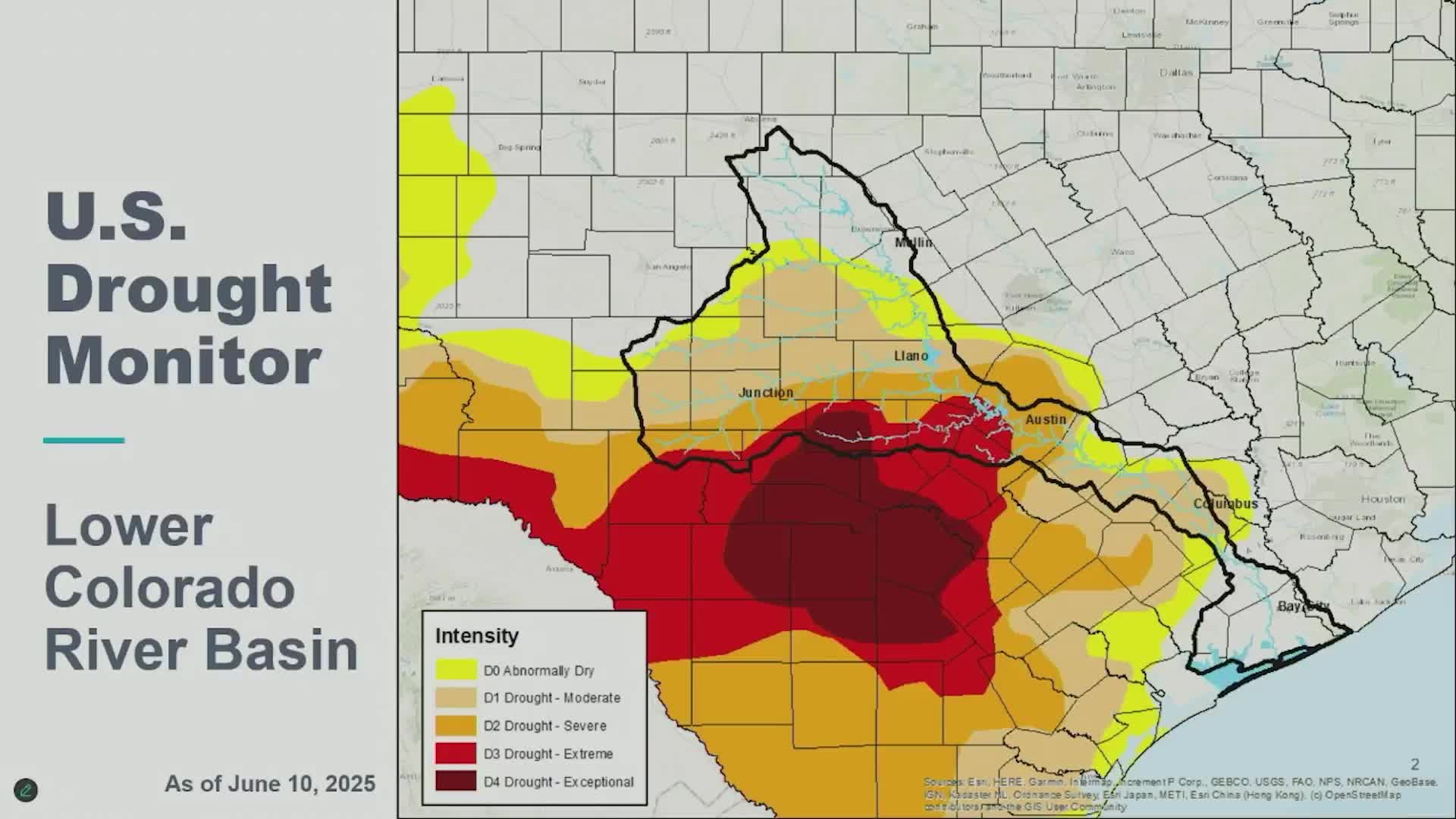Highland Lakes face drought despite recent rain replenishing inflows
June 20, 2025 | Lower Colorado River Authority (LCRA), Departments and Agencies, Executive, Texas
Thanks to Scribe from Workplace AI , all articles about Texas are free for you to enjoy throughout 2025!

This article was created by AI using a video recording of the meeting. It summarizes the key points discussed, but for full details and context, please refer to the video of the full meeting. Link to Full Meeting
Committee members emphasized the need for widespread rain in areas upstream of the Highland Lakes, particularly around Junction, Fredericksburg, and San Saba, to significantly improve water levels in Lakes Travis and Buchanan. While recent rains have contributed to better drought conditions, they have not been sufficient to raise lake levels substantially. The drought monitor indicated that most of the basin remains in some level of dry or drought conditions, with the exception of Wharton and Matagorda counties, which reported no drought.

Before you scroll further...
Get access to the words and decisions of your elected officials for free!
Subscribe for FreeLake Brownwood has been overflowing, contributing to inflows into Lake Buchanan, which is a positive development for the region. However, the Pertinales Basin continues to experience exceptional drought conditions, marking it as the driest area upstream of the lakes.
The committee reviewed inflow data, noting that May saw a significant increase in water inflows due to rainfall, with totals reaching approximately 68,600 acre-feet, or about 35% of the long-term average. June has continued this trend, with inflows reported at around 108,400 acre-feet so far. This uptick in inflows is encouraging, especially when compared to the historical drought of record from 2008 to 2015.
Additionally, the committee discussed the importance of median data over averages for assessing water supply conditions. In May, the inflows were about 61% of the long-term median, indicating a more favorable position than previously assessed averages.
Overall, the meeting underscored the ongoing challenges posed by drought while also highlighting recent improvements in water inflows, which may provide some relief to the affected areas. The LCRA will continue to monitor conditions closely as they evolve.
Converted from LCRA Water Operations Committee meeting June 18, 2025 meeting on June 20, 2025
Link to Full Meeting
Comments
View full meeting
This article is based on a recent meeting—watch the full video and explore the complete transcript for deeper insights into the discussion.
View full meeting




